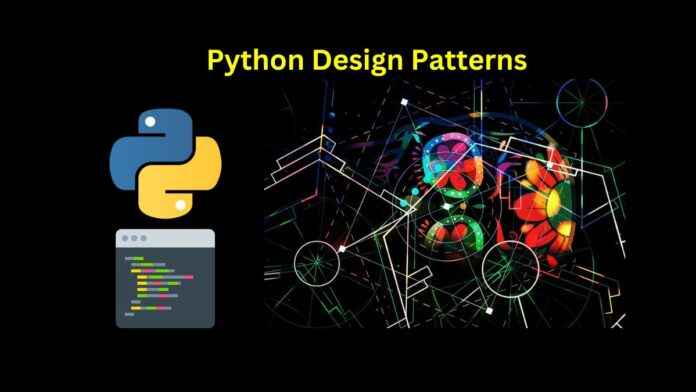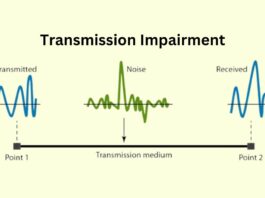Design patterns are reusable solutions to common software design problems. They provide a way to write code that is more flexible, maintainable, and reusable. There are three main categories of design patterns: creational, structural, and behavioral.
In this article we will cover what are design patterns, role of design patterns in coding, why python is a suitable programming language for design patterns, common Design Patterns used in Python and provide examples of how they can be used in Python.
What are Design Patterns?
Python design patterns are reusable solutions to common software design problems. They provide a set of best practices for organizing code and object interactions, making it easier to write maintainable and extensible software.
Role of Design Patterns in improving code structure and maintainability
Design patterns can help to improve the structure and maintainability of code in a number of ways:
- Decoupling code: Design patterns can help to decouple code by reducing the dependencies between different parts of the code. This makes the code more flexible and easier to change.
- Code reuse: Design patterns can help to promote code reuse by providing standardized solutions to common problems. This can save time and effort when developing new software.
- Code readability and maintainability: Design patterns can help to make code more readable and maintainable by using well-known and established design principles.
Why Python is suitable for Design Patterns?
Python is a well-suited programming language for design patterns for a number of reasons:
- Flexibility: Python is a very flexible language, which makes it easy to implement different design patterns.
- Support for object-oriented programming: Python is a fully object-oriented language, which provides all the necessary features for implementing design patterns.
- Large community and ecosystem: Python has a large and active community, which means that there are many resources available to help you learn about and implement design patterns.
Types of Design Patterns in Python
There are many different design patterns, but some of the most common ones used in Python include:
- Creational Design Patterns
- Structural Design Patterns
- Behavioral Design Patterns
Creational patterns
Creational design patterns are a category of design patterns that provide ways to create objects without explicitly specifying their concrete classes. This makes it easier to decouple code and make it more flexible.
Commonly used Creational Patterns in Python
- Factory method: This pattern allows you to defer the creation of objects to subclasses. For example, you could have a factory method that creates different types of vehicles, depending on the input parameters.
- Abstract factory: This pattern allows you to create families of related objects without specifying their concrete classes. For example, you could have an abstract factory that creates all the necessary components for a GUI, regardless of the specific platform.
- Builder: This pattern allows you to construct complex objects step-by-step. For example, you could use a builder to create a new product, adding different features as needed.
- Prototype: This pattern allows you to create new objects by copying existing objects. For example, you could use a prototype to create a new user account, based on a template account.
- Singleton: This pattern ensures that there is only one instance of a given class. For example, you could use a singleton to create a database connection pool, so that all clients share the same pool.
Example of Python Code to illustrate their usage
# Factory method example
class VehicleFactory:
def create_vehicle(self, type):
if type == "car":
return Car()
elif type == "truck":
return Truck()
else:
raise ValueError("Invalid vehicle type: {}".format(type))
# Usage:
vehicle_factory = VehicleFactory()
car = vehicle_factory.create_vehicle("car")
truck = vehicle_factory.create_vehicle("truck")
# Abstract factory example
class GUIFactory:
def create_button(self):
raise NotImplementedError()
def create_label(self):
raise NotImplementedError()
class WindowsGUIFactory(GUIFactory):
def create_button(self):
return WindowsButton()
def create_label(self):
return WindowsLabel()
class LinuxGUIFactory(GUIFactory):
def create_button(self):
return LinuxButton()
def create_label(self):
return LinuxLabel()
# Usage:
gui_factory = WindowsGUIFactory()
button = gui_factory.create_button()
label = gui_factory.create_label()
Structural patterns
Structural design patterns are a category of design patterns that provide ways to organize classes and objects into larger structures. This can help to improve the performance and scalability of software.
Commonly used Structural Patterns in Python
- Adapter: This pattern allows you to make objects with incompatible interfaces work together.
- Bridge: This pattern allows you to separate the interface of a class from its implementation, making it easier to change the implementation without affecting the clients.
- Composite: This pattern allows you to create tree structures of objects.
- Decorator: This pattern allows you to dynamically add new functionality to existing objects.
- Facade: This pattern provides a unified interface to a set of complex subsystems.
- Proxy: This pattern provides a surrogate or placeholder for another object.
Behavioral patterns
Behavioral design patterns are a category of design patterns that provide ways to coordinate the behavior of objects. This can help to make code more reusable and easier to maintain.
Commonly used Behavioral Patterns in Python
- Chain of responsibility: This pattern allows you to pass requests along a chain of objects until one of the objects handles the request.
- Command: This pattern allows you to encapsulate a request as an object, making it easier to queue or log requests.
- Interpreter: This pattern allows you to define a grammar for a language and interpret sentences in that language.
- Iterator: This pattern provides a way to access the elements of an aggregate object sequentially without exposing its underlying representation.
- Mediator: This pattern defines an object that encapsulates how a set of objects interact with each other.
- Memento: This pattern allows you to save and restore the state of an object without exposing its internal structure.
- Observer: This pattern allows you to define a one-to-many dependency between objects so that when one object changes state, all its dependents are notified and updated automatically.
- State: This pattern allows an object to change its behavior when its internal state changes.
- Strategy: This pattern allows you to define a family of algorithms, encapsulate each one, and make them interchangeable.
- Template method: This pattern defines the skeleton of an algorithm in a method, deferring some steps to subclasses.
- Visitor: This pattern allows you to define a new operation without changing the classes of the objects on which it operates.
Significance of Python Design Patterns in Software Development
Python design patterns are significant in software development for a number of reasons:
- Improved code quality: Design patterns can help you to write code that is more maintainable, reusable, and extensible.
- Reduced development time: Design patterns provide a set of pre-tested solutions to common problems, which can save you time when developing new software.
- Improved communication between developers: Design patterns provide a common vocabulary for developers to talk about software design. This can help to improve communication and collaboration on software projects.
- Increased code reliability: Design patterns can help to reduce the number of bugs in your code by providing well-established and tested solutions to common problems.
- Improved code performance: Design patterns can help to improve the performance of your code by providing efficient solutions to common problems.
Conclusion
Design patterns are a powerful tool that can help you to write better software. By learning and using design patterns, you can improve the quality, maintainability, reusability, extensibility, reliability, and performance of your code.
Also Read :
- How to Learn Artificial Intelligence with Python: A Comprehensive Guide
- What is Pointer in Programming
- Top 10 AI Tools for Students
- How to Use Phind AI to Learn Programming Languages



